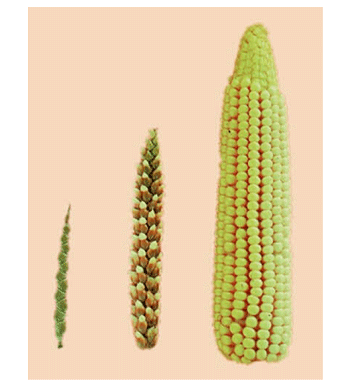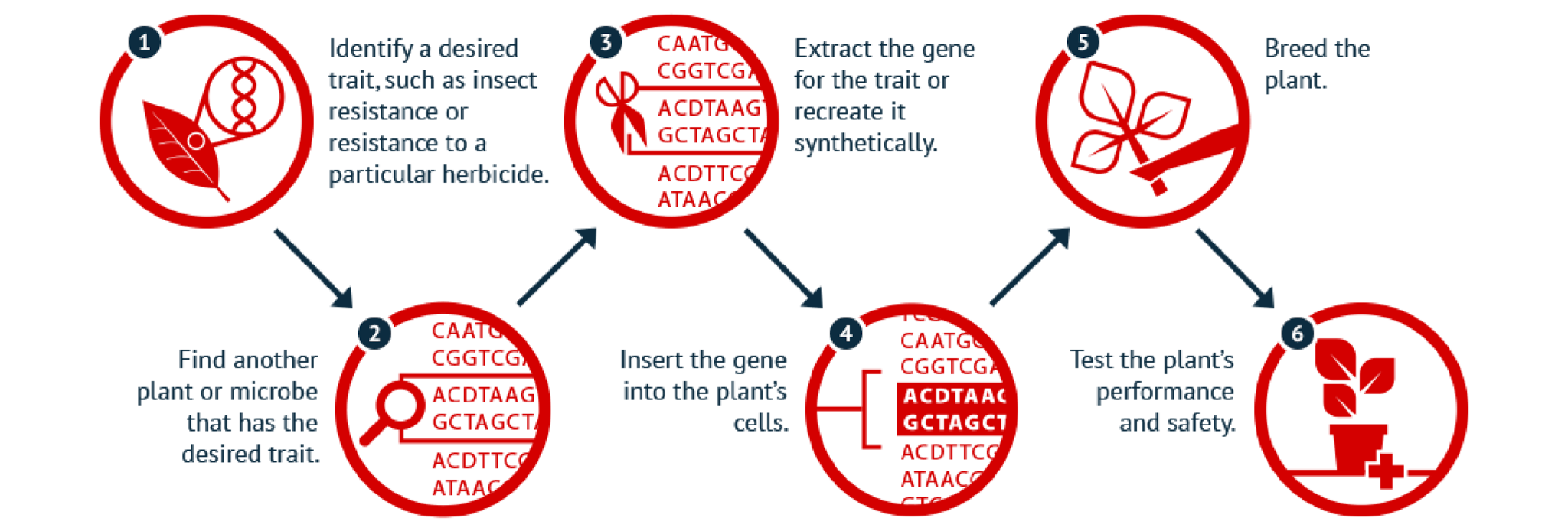Better Food by Design

Because the global population is steadily increasing, farmers need new and innovative solutions to grow enough food while also caring for our planet. It’s no small feat to keep up with a growing world, which is why plant breeding is emerging as one of the best avenues to help ensure food security and protect our environment.
At Bayer, we’re committed to a future where hunger and climate change are terms relegated to the history books—and plant breeding is making great strides in getting us there. In addition to developing new solutions for farmers to address both of these challenges, plant breeders are also making fruits and vegetables tastier and healthier. By combining our knowledge of plant genetics with the power of human ingenuity, plant breeding offers innumerable benefits to consumers, farmers and the world at large.
What do plant breeders do?
After identifying a challenge (such as crops not being able to withstand drought or flood conditions brought about by climate change), breeders explore ways to harness beneficial genetic characteristics to help plants address that issue, among others. Working in both a designer and engineer capacity, plant breeders blend science with innovation to create new solutions.
While technologies have evolved immensely to open new opportunities, plant breeding has been going on for as long as people have been growing crops. Farmers have always found ways to refine plants, empowering them to better protect themselves against harmful pests, weeds and disease, while also using natural resources like water more efficiently. With the tools we’ve developed along the way, contemporary plant breeding is playing a crucial role in addressing today’s challenges, as well as those we’re sure to face in the future:
-
Supporting global food security
-
Helping farmers grow enough while using fewer resources
-
Promoting sustainable agriculture practices
-
Reducing inputs such as crop protection products
Plant breeding to satisfy consumer preference
| Better taste | |
| Longer shelf life | |
| Ideal sizing | |
| Increased variety | |
| Enhanced nutrition |
Helping farmers grow enough while protecting the planet
| More reliable harvests | |
| Pest resistance | |
| Resource efficiency | |
| Disease resistance | |
| Climatic adaptability |
And it can make farming more environmentally friendly and sustainable
| Water conservation | |
| Soil health | |
| Biodiversity | |
| Efficient land use |
How do plant breeders do what they do?
Plant breeding originated out of human preference; we collected what we liked the look and taste of, and began to plant it. From there, perhaps some varieties could better withstand certain environmental pressures such as insects or disease. Over time, farmers gradually replanted the seeds that could best satisfy our tastes and produce successful harvests, ultimately generating the variety we know and enjoy today.
This process embodies the fundamental core of plant breeding: taking a plant with positive characteristics and replanting those seeds to produce more like it. And over many generations, this process can create profound and positive changes in plants. After a while, many are almost unrecognizable when compared to their original, wild form.
 As our knowledge of genetics gradually increased, scientists discovered ways to strategically breed plants for specific traits rather than leave the results up to chance. Today, plant breeders are constantly developing improved crops through new breeding techniques, just as they always have.
As our knowledge of genetics gradually increased, scientists discovered ways to strategically breed plants for specific traits rather than leave the results up to chance. Today, plant breeders are constantly developing improved crops through new breeding techniques, just as they always have.
Corn with abundant kernels? → Plant breeding.
Seedless grapes? → Plant breeding.
Ripe tomatoes that can survive a trip to the grocery store? → Plant breeding.
While the basic principles remain unchanged, scientists have developed new approaches and technologies that greatly expand what we accomplish through plant breeding. These innovations fall into three basic categories:
1. Classical Breeding
As the original approach, classical breeding started with farmers gradually changing crops over time by picking the best plants in a crop and planting more like them. Then, in the past 120 years or so, scientists developed new ways to accelerate and control the process across a greater variety of plants.
Innovations in classical breeding have had a big impact on how farmers grow food, but it also has its limits. Without being able to specifically identify and harness the exact genes for a specific trait, classical breeding can often transfer additional—and often less desirable—genes in addition to the one(s) a plant breeder wants. Corn for example has 32,000 genes, so when a breeder crosses two corn plants with all of those genes, the outcome is difficult to predict. Additionally, this process is only as fast as a corn plant can grow, meaning scientists must wait for several seasons (if not years) before they know whether the cross bred desirable results.
2. Genetic Engineering
Things changed immensely with the discovery of DNA, which allowed scientists to more intimately understand the genetic nuances of plants. With this knowledge, scientists were able to identify which genes are responsible for which traits, allowing them to be much more precise in harnessing beneficial characteristics from one plant and inserting it into another.

Genetically Engineered Foods
Farmers have been cultivating genetically engineered crops, improved through this process, for more than 20 years. Thus far, ten genetically engineered crops are available to benefit consumers, farmers and the planet—and there are more on the way:
Sweet and field corn
Improved insect resistance and herbicide tolerance, so they can be grown with fewer pesticides.
Soybeans
Improved insect resistance and herbicide tolerance.
Canola
Improved herbicide tolerance.
Alfalfa
Improved herbicide tolerance.
Sugar beets
Improved herbicide tolerance.
Papaya
Improved disease resistance to ensure supply and help stabilize the papaya industry.
Squash
Improved disease resistance.
Apples
Resists browning after it’s cut so it still looks appetizing, reducing food waste
Cotton
Improved insect resistance and herbicide tolerance.
Growers are seeing great success with genetically modified organisms (GMOs). Over many years of study, leading scientific organization in the world have consistently found that GMO foods are just as nutritious and just as safe to eat as other any other food, while also offering farmers the ability to conserve natural resources, reduce inputs and therefore curb carbon emissions.
3. Gene Editing
In 2012, scientists discovered the next big opportunity in plant breeding; they learned how to replace small pieces of a plant’s genetic code, so they can remove unwanted traits or add positive ones. This technique is based on a natural process bacteria use to protect themselves from viruses. Scientists use specialized proteins, which act sort of like molecular scissors, to cut or “edit” DNA directly.
Through this technique, scientists are developing plants with specific qualities such as withstanding pressures from evolving insects, weeds and diseases. Gene editing is more precise than other plant breeding techniques, so scientists can develop innovative and effective solutions more quickly, while also being able to tailor crops to meet farmers’ specific needs. What once took many years and thousands of random crosses can now be done in a fraction of the time—and we’re only beginning to harness the possibilities.
Looking ahead
Throughout human history, plant breeding has greatly improved the quality of life for all of us. With new innovations in digital technology, we’re finding ways for plant breeding to help farmers protect their crops against climate change while actively conserving natural resources and protecting the environment. And while we have much to celebrate in this regard, the most exciting aspect of contemporary plant breeding is the new innovations yet to be discovered.










